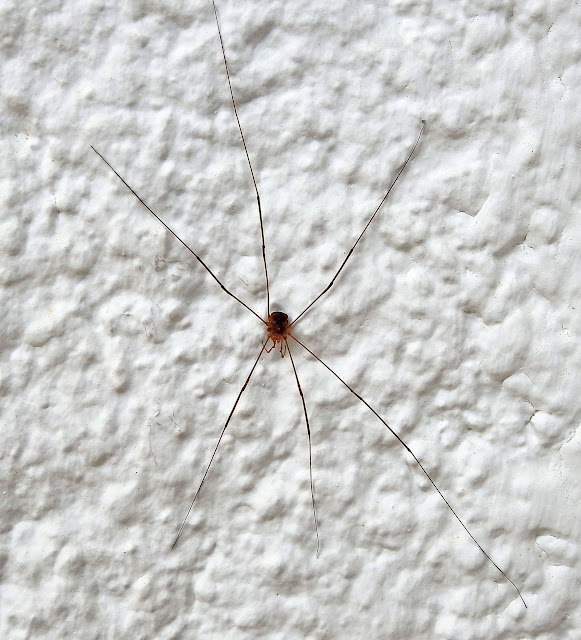Phalangium opilio (also known as the Common harvestman, brown harvestman and daddy longlegs) is a species of harvestman belonging to the family Phalangiidae.
P. opilio is a member of the Eupnoi suborder of Opiliones.
P. opilio has a mostly holarctic distribution and is the most widespread harvestman species worldwide, occurring natively in Europe, North and Central Asia, and Asia Minor. The species has been introduced to North America, North Africa and New Zealand from Europe. In North America, it occurs in non-desert regions of southern Canada and the United States.
This species can be found in a wide range of open habitats, including meadows, bogs, and forests. It is also most abundant in anthropogenic habitats, and is thus considered a synanthropic species of harvestmen. In can be found in habitats modified by humans, such as gardens, agroecosystems, hedgerows, lawns, quarries, urban green spaces, walls and bridges. In agricultural settings, P. opilio is common in temperate cropland, living among crops such as corn, alfalfa, small grains, potatoes, cabbage, strawberries, and apple.
P. opilio apparently prefer vertical surfaces, including tree trunks and vertical man-made structures like fences and walls, with a preference for wood substrate due to its low thermal conductivity and slow release of moisture, being a thermophilous and moderately hygrophilous species. However, their preference varies based on the amount of cover available in a certain area. P. opilio tend to be found in shrubs and brushy vegetation when sparse shrub cover exists, but tend to be found on the ground layer when dense cover is present, such as low vegetation and grass. Early instars, immature P. opilio, only occur on the ground, but later instars have a broader vertical range. P. opilio have also been observed to take cover in low vegetation, like grass, during rain.

